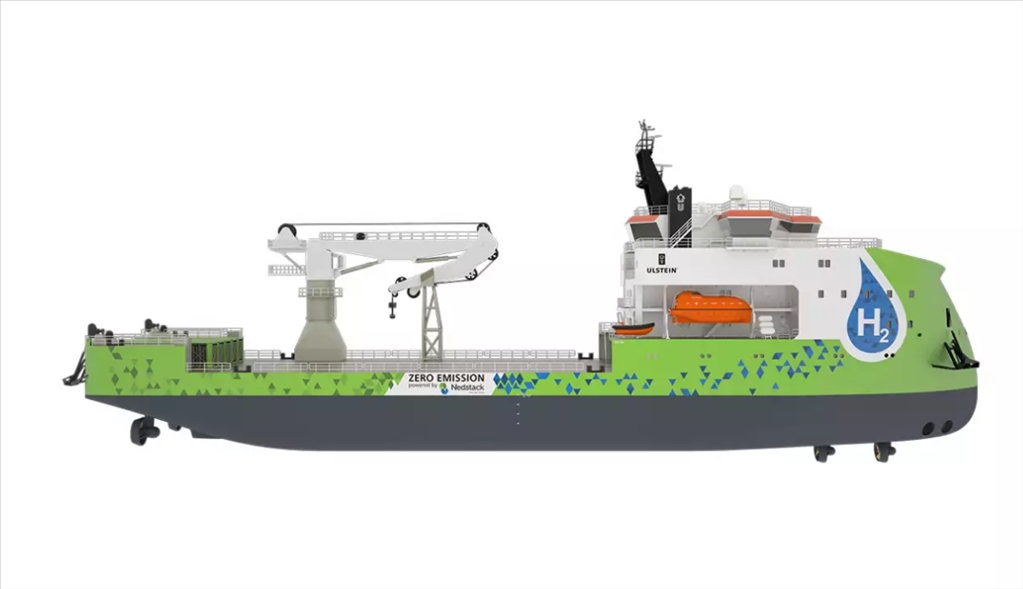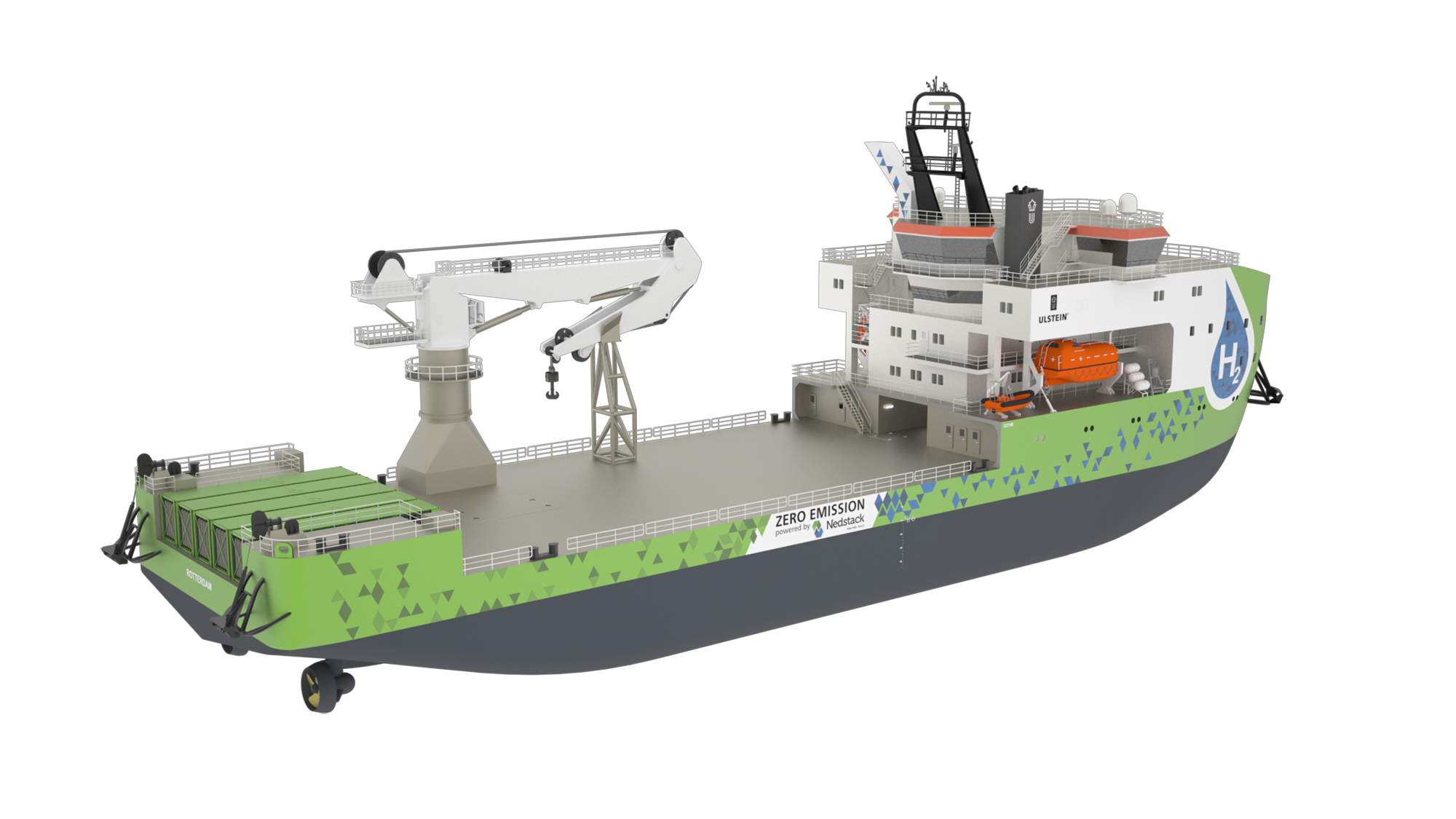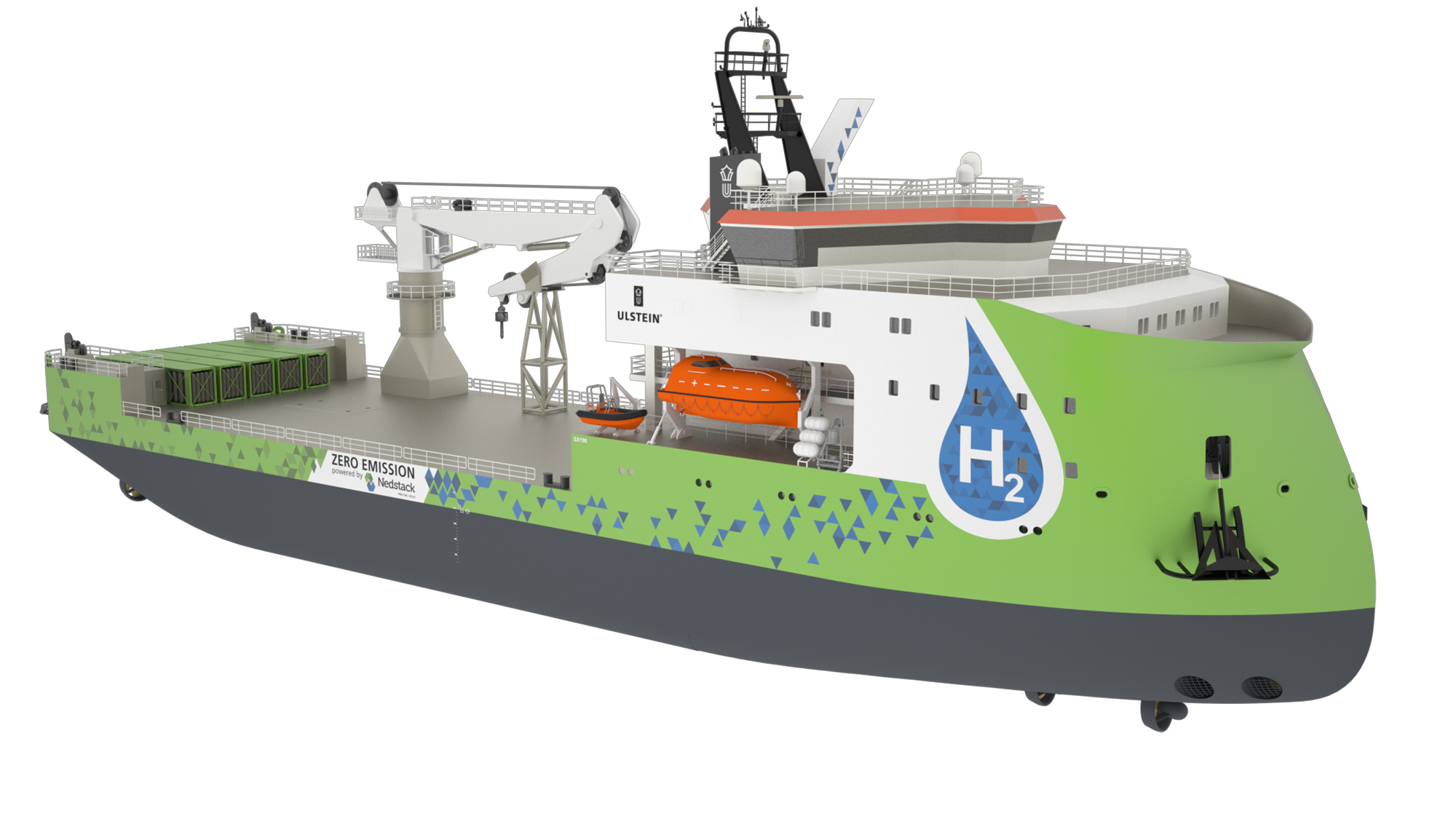Hydrogen is considered as the ultimate zero-emission solution. Ulstein's vision is to create tomorrow’s solutions for sustainable marine operations, and our first hydrogen-powered ship design is now market-ready, offering zero-emission marine operations. The solution can be taken in use today.

Recently, DNV GL identified the five most promising alternative fuels for shipping, with hydrogen as the ultimate zero-emission solution. The first complete hydrogen-fuelled prospect has been put together by Ulstein Design & Solutions BV and Nedstack fuel cell technology BV. The ULSTEIN SX190 Zero Emission DP2 construction support vessel is Ulstein’s first hydrogen-powered offshore vessel, featuring a Nedstack fuel cell power system. The DP2 vessel can cater for a large variety of offshore support operations.
This design uses proven and available technology, enabling clean shipping operations to reduce the environmental footprint of offshore projects. CO2, NOxand particle emissions are eliminated when using hydrogen fuel cells.
First vessel can be delivered in three years
“The maritime industry needs to align and be ambitious in bringing green solutions forward for a sustainable future. With this hydrogen-fuelled vessel, we aim for future zero-emission operations of long endurance,” says Tore Ulstein, deputy CEO, Ulstein Group. Sea trials of a newbuild ULSTEIN SX190 Zero Emission could happen as soon as 2022.

Targeting zero-emissions for two weeks
With today’s technology, the ULSTEIN SX190 design is already capable to operate 4 days in zero-emission mode. However, with the rapid developments in hydrogen storage and fuel cell technologies, a future zero-emission endurance of up to two weeks is targeted. For extended missions and capabilities, the vessel can fall back on its more conventional diesel-electric system using low sulphur marine diesel oil.
The ULSTEIN SX190 Zero Emission design is based on Ulstein’s existing SX190 vessel platform and has a total installed power of 7,5 MW, of which 2 MW is generated by a fuel cell power system, typically Nedstack Proton Exchange Membrane (PEM) fuel cells, which are located in a separate, 2nd engine room.
PEM fuel cells convert hydrogen and air into electric power, heat and water and produce no harmful emissions in the process. Nedstack fuel cell systems have already been built and proven in the multi-megawatt power ranges and have now been marinized to meet the requirements of the marine industry, including class requirements and supply chains.
“Ulstein is constantly looking to improve marine operations and to reduce the environmental footprint of the vessels we deliver to the market”, says Ko Stroo, product manager at Ulstein Design & Solutions BV. “Implementing fuel cell technology in a workhorse like the SX190 CSV design is one of the steps we take to move the marine industry into a more sustainable future, in addition to our X-BOW® hull shape, ULSTEIN ZEDTM‘get-in-and-leave-no-trace solution’ and plug-in hybrid solutions.”

The PEM fuel cells used in the SX190 Zero Emission design are fuelled by hydrogen from containerized pressure vessels, a well proven and readily available technology. These hydrogen storage containers can be loaded and unloaded by normal container handling operations and equipment. Hence, eliminating the need for expensive bunkering infrastructure and providing worldwide operational flexibility.
The hydrogen containers can be refilled at hydrogen production sites, either from industry by-product hydrogen or green hydrogen from electrolysis, making the vessel globally employable.
Early adopters
Ulstein works closely with suppliers to apply greener technology and aims at those shipowners and energy utilities that share the same ambitions and are willing to work together to justify the additional investment needed to lead the path towards Zero-Emission Shipping.
This initiative particularly supports the following Sustainable Development Goals as defined by the UN Global Compact and embraced by Ulstein Group:
9 - Industry, innovation and infrastructure: The solution reduces the environmental footprint of offshore projects. CO2, NOx and particle emissions are eliminated.
14- Life below water: The solution helps to reduce the negative impact of offshore construction vessels on local marine ecosystems.
17 – Partnerships for the goals: Cooperation across companies and industries to achieve synergy effects for the most sustainable solutions.
Source: Ulstein